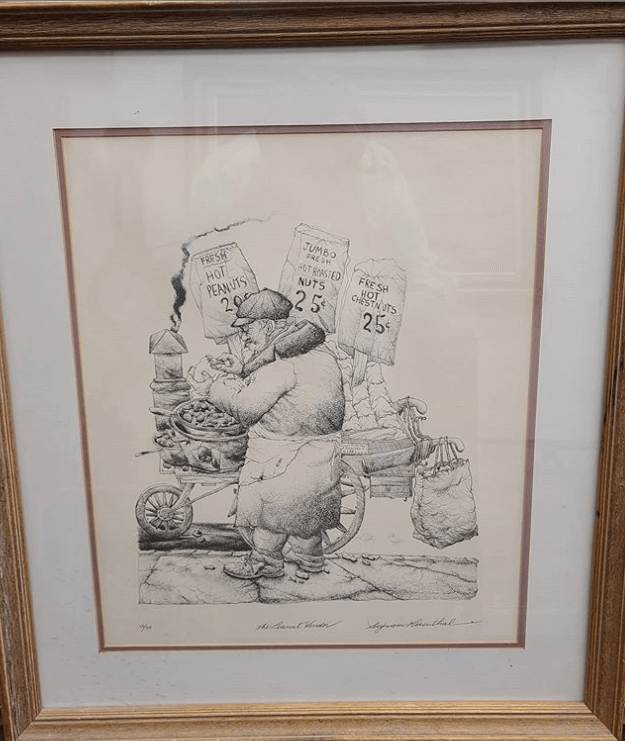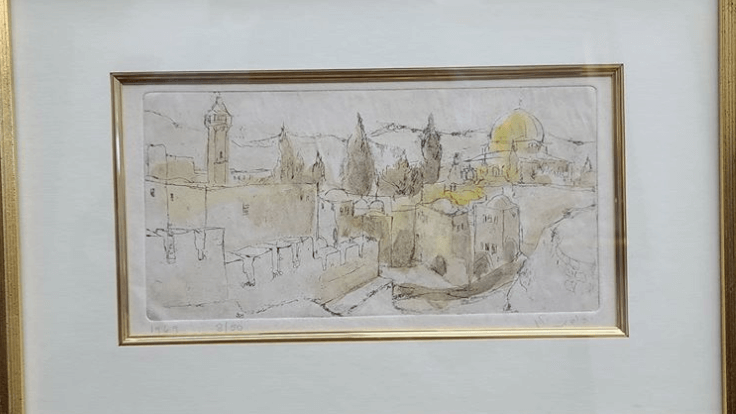Let’s switch things up and take a look at some lithographs this week. The simple definition of a lithograph is a type of print in which an image is transfer from a plate to paper. Did you know that most mass-produced printed objects, like books and posters, are created with “offset lithography?”
To get more technical, lithography relies on to use of hydrophobic (water-repelling) and hydrophilic (water-retaining) liquids. The artist will add both types of material to the painting and then a compatible ink is introduced and topped with a plate, ready to be printed on. In the days before automated mass production of art, artists often produced a series of lithographs alongside the original piece. The lithographs were popular among the upper-middle class; people who could not afford a painting or a replica would purchase lithographs.
In this lithograph by Seymour Rosenthaul features a man selling various types of nuts on a cobblestone street. With very little background detail, the viewer is allowed to come to their own conclusions as to where this man is. When I look at it, it’s the early 1900s and the merchant is making his way through the streets of New York, hoping to find some customers. What do you think?

This lithograph of Jerusalem by Yehudis Yelin uses a similar technique, but in reverse. Where Rosenthal’s lithograph’s subject was extraordinarily detailed with no background, this lithograph creates a full image, but does not have an abundance of detail. It’s clear that it is Jerusalem, but what era of Jerusalem are we looking at? The massive stones that make up the walls are not clearly marked, and there is not a person in sight.

